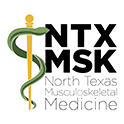Arthritis and Regenerative Medicine
As we age, chronic injuries, along with normal wear and tear on our joints, often lead to arthritis. The smooth articular cartilage between the joints that cushions and protects begins to wear down, causing bones to rub against each other. Bone spurs often develop. The resulting friction leads to pain and swelling. This chronic inflammation results in arthritis and further degeneration of tissue.

